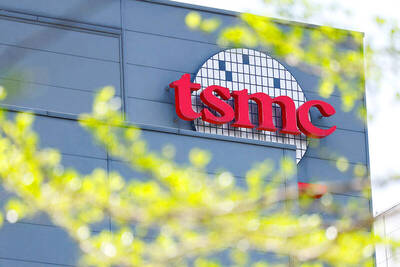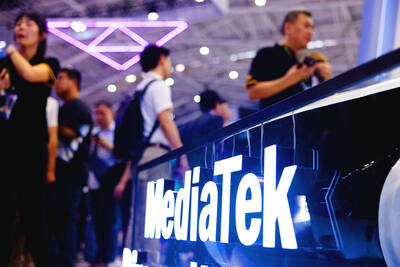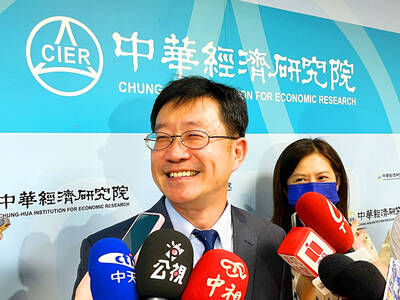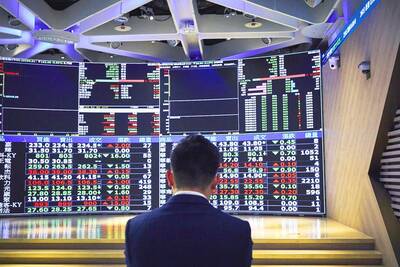PC vendor Acer Inc (宏碁) said on Tuesday it had won an order to supply a local restaurant chain with tablets that diners can use to order food.
The restaurant chain is to buy about 1,000 to 2,000 of Acer’s 7-inch Android tablets, said Samuel Chang (張世欣), director of the marketing division of Acer’s Taiwan regional operation.
However, Chang declined to name the business.
Starting next month, customers at the chain’s 20 to 30 restaurants around the country will be able to use the tablets to place their food orders, Chang said.
“It seems like many enterprises have started thinking about how their salespersons can adopt more portable solutions,” he said at the launch of Acer’s new 8-inch tablet, which retails for NT$7,490 (US$249).
Chang said that while Acer is discussing other commercial projects, Taiwan’s consumer market remains the company’s main target for its tablet products in the second half of the year.
The company has forecast a 40 percent quarterly growth for domestic sales this quarter, including laptops, desktop computers, 2-in-1 hybrid devices, tablet PCs, smartphones, monitors, projectors and servers, Chang said.
On July 3, Acer teamed up with two leading sales agents in Taiwan — Synnex Technology International Corp (聯強) and Weblink International Inc (展碁) — to market its eight major product lines.
Acer said the cooperation would expand its sales network in the country to a total of about 5,000 distributors and thus reach millions more domestic consumers and more than 1 million local businesses.
Meanwhile, HTC Corp (宏達電) on Tuesday declined to comment on a foreign media report that it is working on two more tablet computers in addition to its anticipated 9-inch premium device in cooperation with Google Inc.
Tech news site BGR cited a Twitter post from famous leaker “@evleaks” as reporting on Monday that besides the Nexus 9, HTC might also launch tablets codenamed “T7” and “T12.”
The report did not reveal further details.
The HTC-Google Nexus 9 is expected to go on sale in this fall, priced from around US$399.
It will feature a 2K display, a 64-bit processor, 2GB of RAM, up to 32GB of storage, an 8-megapixel camera with optical image stabilization and the latest Android L operating system, the report said.
HTC declined to comment on the new products, but suggested that it might return to the tablet market at some point.
“We can’t comment on the details of our roadmap, but we have previously confirmed that we continue to watch the tablet market with interest and will only introduce a new product to any category if we feel we can offer real improvements over the current competitors,” HTC said in an e-mail.
HTC, which manufactured Google’s first Nexus smartphone in 2010, has launched only two tablets of its own in the past, but they have proved unpopular due to their relatively high costs.
The HTC Flyer was unveiled in April 2011, priced at US$499, while the 4G LTE-enabled HTC Jetstream was launched in September that year at US$849.

Six Taiwanese companies, including contract chipmaker Taiwan Semiconductor Manufacturing Co. (TSMC), made the 2025 Fortune Global 500 list of the world’s largest firms by revenue. In a report published by New York-based Fortune magazine on Tuesday, Hon Hai Precision Industry Co. (better known as Foxconn) ranked highest among Taiwanese firms, placing 28th with revenue of US$213.69 billion. Up 60 spots from last year, TSMC rose 60 places to reach No. 126 with US$90.16 billion in revenue, followed by Quanta Computer Inc. at 348th, Pegatron Corp. at 461st, CPC Corp., Taiwan at 494th and Wistron Corp. at 496th. According to Fortune, the world’s

NEW PRODUCTS: MediaTek plans to roll out new products this quarter, including a flagship mobile phone chip and a GB10 chip that it is codeveloping with Nvidia Corp MediaTek Inc (聯發科) yesterday projected that revenue this quarter would dip by 7 to 13 percent to between NT$130.1 billion and NT$140 billion (US$4.38 billion and US$4.71 billion), compared with NT$150.37 billion last quarter, which it attributed to subdued front-loading demand and unfavorable foreign exchange rates. The Hsinchu-based chip designer said that the forecast factored in the negative effects of an estimated 6 percent appreciation of the New Taiwan dollar against the greenback. “As some demand has been pulled into the first half of the year and resulted in a different quarterly pattern, we expect the third quarter revenue to decline sequentially,”

WEAKER ACTIVITY: The sharpest deterioration was seen in the electronics and optical components sector, with the production index falling 13.2 points to 44.5 Taiwan’s manufacturing sector last month contracted for a second consecutive month, with the purchasing managers’ index (PMI) slipping to 48, reflecting ongoing caution over trade uncertainties, the Chung-Hua Institution for Economic Research (CIER, 中華經濟研究院) said yesterday. The decline reflects growing caution among companies amid uncertainty surrounding US tariffs, semiconductor duties and automotive import levies, and it is also likely linked to fading front-loading activity, CIER president Lien Hsien-ming (連賢明) said. “Some clients have started shifting orders to Southeast Asian countries where tariff regimes are already clear,” Lien told a news conference. Firms across the supply chain are also lowering stock levels to mitigate

DIVERSIFYING: Taiwanese investors are reassessing their preference for US dollar assets and moving toward Europe amid a global shift away from the greenback Taiwanese investors are reassessing their long-held preference for US-dollar assets, shifting their bets to Europe in the latest move by global investors away from the greenback. Taiwanese funds holding European assets have seen an influx of investments recently, pushing their combined value to NT$13.7 billion (US$461 million) as of the end of last month, the highest since 2019, according to data compiled by Bloomberg. Over the first half of this year, Taiwanese investors have also poured NT$14.1 billion into Europe-focused funds based overseas, bringing total assets up to NT$134.8 billion, according to data from the Securities Investment Trust and Consulting Association (SITCA),